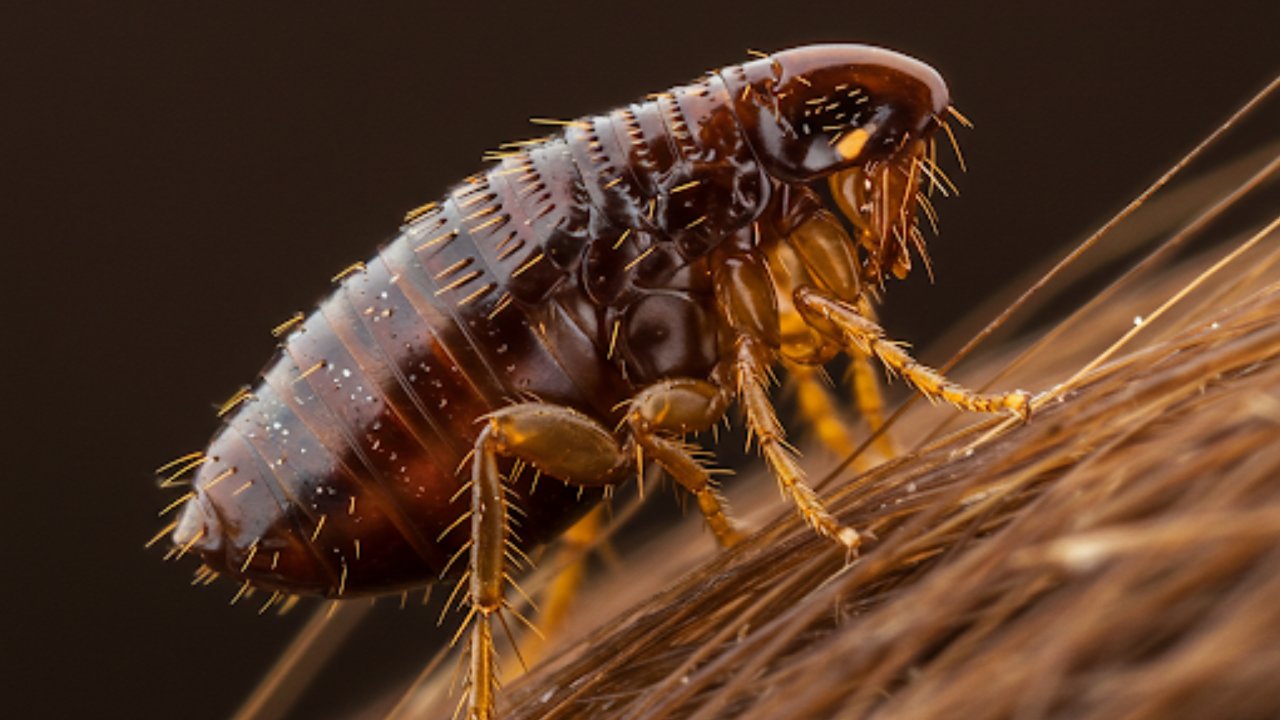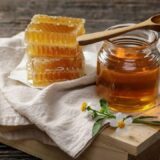How to Get Rid of Fleas in the House Fast Naturally
Fleas are a common problem for both pets and humans and dealing with an infestation requires a proactive approach. These tiny, bloodsucking parasites are notorious for reproducing quickly, which makes flea control crucial to prevent widespread infestation.  Fleas not only cause discomfort and itching but also pose significant health risks, including allergic reactions, disease transmission, and even tapeworm infections. There are various home remedies that can effectively help get rid of fleas, whether you’re treating your pets or your home.
Fleas not only cause discomfort and itching but also pose significant health risks, including allergic reactions, disease transmission, and even tapeworm infections. There are various home remedies that can effectively help get rid of fleas, whether you’re treating your pets or your home.
Many of these solutions are natural, cost-effective, and safe for both pets and humans. From simple household ingredients like vinegar and salt to more specialized treatments like diatomaceous earth, these remedies can target fleas at every stage of their life cycle—eggs, larvae, pupae, and adults.
In this guide, we’ll explore some of the best natural and DIY solutions to control and eliminate fleas. These methods provide a safer alternative to chemical treatments and can be just as effective when used consistently. By taking a comprehensive approach, you can eliminate fleas from your home, your pets, and your yard, reducing the chances of a reinfestation.
What Are Fleas?
Fleas are small, wingless insects that feed on the blood of mammals and birds. Known for their jumping ability, they move easily from host to host.
There are over 2,000 species, with the cat flea (Ctenocephalides felis) being the most common in homes. Fleas go through four stages of development: egg, larva, pupa, and adult.
Their rapid reproduction, with females laying up to 50 eggs per day, makes them difficult to control and leads to widespread infestations.
Types of Fleas
1. Cat Flea (Ctenocephalides felis): The cat flea is the most common species found on pets, especially cats and dogs. They are the main cause of flea infestations in households.
2. Dog Flea (Ctenocephalides canis): Less common in the U.S., the dog flea still poses a threat in certain areas. Like cat fleas, they feed on the blood of mammals.
3. Flea Typhus: Fleas can transmit diseases such as flea typhus, caused by bacteria carried by fleas. This disease can lead to serious health complications in humans.
4. Human Flea (Pulex irritans): Although rare today, human fleas were once common in homes, especially in regions with poor sanitation. They primarily feed on human blood and can be found in areas where people and animals are in close contact.
5. Rat Flea (Xenopsylla cheopis): The rat flea is often found on rodents, especially rats. These fleas are known to be vectors for diseases like the plague, as they can transmit the Yersinia pestis bacteria from rodents to humans.
5. Flea Sticktight (Echidnophaga gallinacea): Flea sticktight is most commonly found on poultry and is particularly troublesome for birds. However, it can also infest pets and cause irritation. These fleas attach firmly to the host, making them harder to remove.
Flea Feeding Habits and Where They’re Found
Fleas are bloodsuckers that primarily feed on the blood of mammals and birds. Their primary goal is to obtain a blood meal, which is essential for reproduction. Fleas can feed multiple times a day, and their bites are often itchy and uncomfortable for both pets and humans.
Feeding Habits: Fleas use their specialized mouthparts to pierce the skin of their host and draw blood. This feeding process can cause intense itching, as their saliva contains substances that trigger allergic reactions in some animals and humans. Fleas prefer to feed on warm-blooded hosts, such as cats, dogs, and rodents.
Where They’re Found: Fleas are commonly found in areas where pets, wildlife, and humans live and spend time. These pests thrive in:
- Homes: Fleas are often found in carpets, upholstery, and bedding where pets sleep. They can also hide in cracks and crevices around the house.
- Yards and Outdoors: Fleas can be found in tall grass, bushes, or areas with dense vegetation where wild animals like rodents and opossums frequent.
- Pets: Pets like cats and dogs are the most common hosts for fleas. Fleas will attach to their fur and skin, feeding and reproducing.
Fleas are highly adaptable and can live in a variety of environments, which is why they are so difficult to eliminate without proper treatment and prevention methods.
Effects of Fleas on Humans
Flea infestations can cause a range of health issues for humans, primarily through their bites and the diseases they may carry. Here are the most common effects fleas have on humans:
1. Flea Bites: Flea bites are small, red, itchy bumps that often appear in clusters or lines. They occur when fleas feed on human blood and can cause intense itching and irritation. Some people may also experience allergic reactions to flea saliva, leading to more severe itching and swelling.
2. Allergic Reactions: In some cases, flea bites can cause an allergic reaction known as flea allergy dermatitis (FAD). This can result in more severe redness, swelling, and itching, sometimes requiring medical treatment to alleviate symptoms.
3. Flea-borne Diseases: Fleas can transmit serious diseases to humans, such as:
- Plague: Caused by the bacterium Yersinia pestis, this disease is typically carried by rat fleas and can lead to fever, swollen lymph nodes, and even death if not treated.
- Flea Typhus: A bacterial infection transmitted by fleas, leading to fever, rash, and headaches. It’s usually contracted through flea bites or by contact with infected fleas’ feces.
4. Tapeworms:Fleas can carry the larvae of tapeworms (Dipylidium caninum). If a person accidentally ingests an infected flea, typically through contact with an infected pet, they can develop a tapeworm infection.
5. Skin Infections: Frequent scratching of flea bites can lead to secondary infections, particularly if the skin becomes broken or inflamed. These infections may require medical treatment with antibiotics.
6. Flea Allergy Dermatitis (FAD) Flea Allergy Dermatitis is a condition that occurs when humans are allergic to the proteins in flea saliva. When bitten, the immune system reacts to the saliva, leading to intense itching, swelling, and the development of rashes. In some cases, FAD can cause skin infections or result in long-term irritation.
7. Anemia: While more common in pets, severe flea infestations in humans, particularly in children, can lead to anemia. This happens when the number of fleas feeding on a person is large enough to cause blood loss over time. Although rare, it can occur in extreme cases, particularly with vulnerable individuals.
8. Scratching-Induced Infections: Constant scratching of flea bites can break the skin and introduce bacteria, leading to infections such as cellulitis. These infections may require antibiotic treatment if left untreated and can lead to complications if the bacteria spreads.
9. Mental Discomfort and Anxiety: Flea infestations can also lead to significant mental distress. The constant itching, discomfort, and worry about flea control can cause stress and anxiety for individuals, especially if the infestation is not quickly addressed.
10. Transmission of Other Zoonotic Diseases: Fleas are also capable of transmitting other zoonotic diseases (diseases that can spread between animals and humans) through their bites. Although less common today, flea-borne diseases such as tularemia (rabbit fever) and murine typhus can still occur in some areas, adding to the health risks associated with flea infestations.
Home Remedies for Fleas
There are many natural and effective ways to manage and eliminate fleas in your home and on your pets. Below are some of the most commonly recommended remedies:
1. Neem or Oatmeal Shampoo
- How it Works: Neem oil or oatmeal-based shampoos can help kill fleas on pets. The natural properties of neem oil are especially effective in repelling fleas.
Application: Add a few drops of neem oil to a gentle pet shampoo and bathe your pet. Allow the foam to sit for a few minutes before rinsing thoroughly.
2. Apple Cider Vinegar
- For Pets: Mix equal parts of apple cider vinegar and water in a spray bottle. After bathing your pet, spray the solution onto their fur and rub it in. Avoid applying near open wounds.
For Humans: If you’re prone to flea bites, apply diluted apple cider vinegar to your skin to prevent itching. Drinking a small amount of diluted vinegar can also help repel fleas from pets.
3. Diatomaceous Earth & Borax
- How it Works: Diatomaceous earth and borax are natural powders that can be sprinkled on carpets and bedding to kill fleas by dehydrating them. They also kill flea larvae and eggs.
Application: Mix diatomaceous earth with borax and salt, then sprinkle it around your home, especially on carpets and upholstery. Let it sit for 24 to 48 hours before vacuuming it up.
4. Flea Prevention Diet
- For Pets: Add garlic or sulfur to your pet’s diet, as these natural substances can help repel fleas. Additionally, black walnut hulls are another natural repellent found in health food stores.
5. Dish Lamp Flea Trap
- How it Works: This simple method uses light to attract fleas. Once they land in the soapy water, they become trapped and drown.
Application: Place a shallow dish with water and a few drops of dish soap under a light source, such as a lamp. Fleas are drawn to the light and fall into the solution, where they drown.
6. Salt
- How it Works: Salt is a natural flea killer that works by dehydrating the fleas, larvae, and eggs.
Application: Sprinkle salt generously on carpets, rugs, and pet bedding. Leave it for 12-24 hours before vacuuming it up. Make sure to vacuum thoroughly to remove dead fleas and eggs.
7. Lemon Spray
- How it Works: Lemons contain a natural acid and strong scent that fleas dislike. The citrus smell acts as a repellent.
Application: Slice a lemon and soak it in water overnight. The next day, strain the water and pour it into a spray bottle. Use this solution to spray your pet’s fur or apply it to areas of your home where fleas are present.
8. Essential Oils
- How it Works: Certain essential oils like lavender, peppermint, and eucalyptus are known to repel fleas. These oils contain compounds that are toxic to fleas but are safe when used correctly on pets and in the home.
Application: Mix a few drops of essential oil with water (and a carrier oil if using on pets) in a spray bottle. Lightly spray it on your pet’s coat (avoiding eyes and sensitive areas) or around your home to keep fleas at bay.
9. Baking Soda
- How it Works: Baking soda works by breaking down flea exoskeletons, dehydrating them and causing them to die.
Application: Sprinkle baking soda on carpets, furniture, and pet bedding. Gently rub it into the fabric with a brush. Leave it for a few hours or overnight, and then vacuum it up.
10. Flea Comb
- How it Works: A flea comb helps to physically remove fleas, larvae, and eggs from your pet’s fur.
Application: Gently comb through your pet’s fur, focusing on areas where fleas are most likely to hide, such as the neck, behind the ears, and around the tail. After each pass, dip the comb into soapy water to kill the fleas.
11. Cedar Chips
- How it Works: Cedarwood contains natural oils that fleas find unpleasant, and it acts as a natural flea repellent.
Application: Place cedar chips in areas where fleas are commonly found, such as pet bedding, closets, or corners of rooms. You can also add them to vacuum bags to help repel fleas.
12. Hot Water Laundry Wash
- How it Works: Fleas and their eggs can be killed by the heat of hot water.
Application: Wash your pet’s bedding, your own bedding, and any other fabrics that may have been exposed to fleas in hot water. Dry them on the hottest setting possible to ensure that any remaining fleas are killed.
13. Herbal Flea Powder
- How it Works: Certain herbs, like rosemary, mint, and lavender, naturally repel fleas due to their strong scents.
Application: Grind dried herbs into a fine powder and sprinkle them on carpets, pet bedding, or areas where fleas are common. These herbs help to keep fleas away and provide a pleasant scent.
14. Vacuuming Regularly
- How it Works: Vacuuming is one of the most effective ways to remove fleas, their eggs, and larvae from carpets, rugs, and furniture.
Application: Vacuum your home thoroughly every day, especially in areas where your pets spend time. Make sure to dispose of the vacuum bag or empty the canister immediately to prevent fleas from escaping.
How to Get Rid of Fleas in the House Fast with Baking Soda
Baking soda is a simple, natural remedy for tackling flea infestations in your home. Here’s how to use it effectively:
- Sprinkle Baking Soda: Generously sprinkle baking soda on carpets, rugs, pet bedding, and other areas where fleas are present. Focus on areas where fleas are most likely to hide, such as along edges and corners.
- Rub It In: Use a brush or your hands to rub the baking soda into the fabric and fibers of the carpet. This helps to reach the fleas and their eggs that may be deep within.
- Leave It for 12-24 Hours: Allow the baking soda to sit for 12-24 hours. This gives it time to dehydrate and kill fleas, larvae, and eggs.
- Vacuum Thoroughly: After the waiting period, vacuum the treated areas thoroughly. Make sure to dispose of the vacuum bag or empty the canister immediately to avoid fleas escaping.
Repeat this process as needed to eliminate fleas and their eggs effectively. Baking soda works by dehydrating the fleas and eggs, making it a natural and cost-effective solution.
How to Get Rid of Fleas Naturally with Vinegar
Vinegar is an effective and natural solution for getting rid of fleas. Here’s how to use it:
- Vinegar Spray for Pets: Mix equal parts of apple cider vinegar (ACV) and water in a spray bottle. After bathing your pet, spray the solution onto their fur and rub it in. Be cautious to avoid open wounds, as vinegar can sting.
- Vinegar for Flea Bites on Humans: If you’ve been bitten, apply diluted vinegar (1:1 ratio of vinegar and water) to the affected area with a cotton ball. This will help soothe the itching and reduce irritation.
- Vinegar House Spray: For your home, mix equal parts vinegar and water in a spray bottle. Lightly spray it on furniture, carpets, and pet bedding. The smell repels fleas and prevents future infestations.
- Vinegar in Pet Drinking Water: Adding a small amount (about a tablespoon) of apple cider vinegar to your pet’s water bowl can help repel fleas. Ensure it’s a small amount to avoid any upset stomach.
Vinegar works by disrupting the fleas’ pH balance, making it an effective deterrent and natural remedy for fleas on pets and in the home.
Additional Tips and Preventive Measures
- Regular Grooming: Use a flea comb regularly to check your pet for fleas, eggs, and larvae. Grooming helps catch fleas early before an infestation develops.
- Vacuuming and Cleaning: Frequent vacuuming helps remove flea eggs and larvae from carpets, rugs, and furniture. Be sure to dispose of the vacuum bag immediately to prevent re-infestation.
- Steam Cleaning: Steam cleaning carpets and upholstery can help eliminate fleas at all stages of their lifecycle. The high heat kills both adult fleas and their eggs.
- Outdoor Flea Control: Treat your yard with natural flea repellents like nematodes (microscopic worms that eat flea larvae). Also, keep your yard tidy by trimming grass and removing debris where fleas can hide.
FAQs:
1. What kills fleas in your house fast?
Vacuuming, using flea sprays or powders, and steam cleaning can kill fleas quickly. Flea treatments like diatomaceous earth and natural flea traps can also be effective.
2. What can kill fleas naturally?
Natural remedies include diatomaceous earth, apple cider vinegar, neem oil, lemon spray, and essential oils like lavender and eucalyptus.
3. What smell do fleas hate?
Fleas dislike strong scents like lavender, eucalyptus, citronella, and peppermint, which can be used to repel them.
4. Will coconut oil kill fleas?
Coconut oil can suffocate fleas on your pet’s skin, but it’s not as effective at killing fleas as other remedies. However, it can soothe flea bites and help in flea prevention.
5. What kills fleas for 24 hours?
Flea sprays and topical treatments designed for pets can kill fleas on contact, with some offering protection for up to 24 hours.
6. Can fleas live in human hair?
Fleas typically do not live in human hair, as they prefer the fur of animals. However, they can bite humans and cause irritation.
7. What kills flea eggs?
Flea eggs are killed by heat, vacuuming, and some natural powders like diatomaceous earth or borax, which dehydrate them.
8. Do fleas bite humans?
Yes, fleas can bite humans, typically causing itchy, red bumps. Flea bites can also transmit diseases in some cases.
9. How to deflea a house overnight?
To quickly deflea a house overnight, vacuum thoroughly, use flea sprays or powders on carpets and upholstery, and wash all bedding and pet items in hot water.
10. Can fleas live in your bed?
Fleas can live in your bed, especially if your pets sleep there. They hide in bedding and sheets, so regular cleaning and flea treatments are necessary.
11. Can fleas live on humans?
Fleas can bite humans, but they do not live on humans like they do on animals. Humans are not a preferred host, but fleas may still jump onto them in search of a blood meal.
12. How to stop fleas?
Regularly groom pets, use flea treatments, clean your home frequently, and apply natural or chemical flea control methods to stop fleas from infesting your home and pets.
Dealing with fleas can be challenging, but with the right home remedies, you can keep your pets and home flea-free. While some methods may take time to work, consistency is key. Regular grooming, cleaning, and natural treatments are effective in preventing and eliminating fleas.


























I find that it’s really important that you clean any furniture that your pet has been on tin order to make sure that the fleas don’t come back.
Need to try Neem and Vinegar on my dog. Thanks so much.
I m suffering from flea bites, I got big red patches on my leg,wrist & belly…do I apply neem oil on that red patches ??
I put down black felt in a few places for my cat to rest inside the house, she knows when I put down this that it is her rest places. I can see from the number of white specks if she has bad infestation, also have towels for her to use to rest. The felt and towels are shaken into white bathtub and shower turned on and I can see red while washing down drain. Also, I take towels she rests on after shaking into tub and run in hot clothes dryer. This seems to prevent infestations.
I know that permethrin is poison to cats, however, since Dollar Sxxxx has 3.0 ml of 45% permethrin for applicatin on dog I put in spray bottle and dilute with 600 ml of water for ~0.225% solution which I spray on rugs and on brush that I use on cat. At this level she does not show adverse reaction and seem to like the smell. Most commercial sprays have between 3% and .225% permethrin as their main ingredients, some much less so I prefer to mix my own. I will start applying solution on brush to head and ears at beginning of brushing event to prevent migration to head…which I had not considered in my manner of doing the brushing. My cat has what looks like the clinging fleas or mites in a small bare spot on her eyelid which I will try to treat with the ceder oil type mixture and may be ringworm treatment just in case. I wish people posted more pictures of diagnosed conditions as I know with humans typically doctors refer to photographs to confirm their diagnosis.
Thanks to all for everyone has added well to this site.
Fleas can be a major nuisance, it is a common problem during the summer since as the heat picks up, the fleas’ breeding season picks up as well.